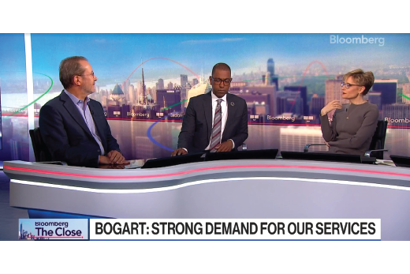Liz Bigham: Suzie, to start us off, could you talk about what portfolio finance is and why it's useful to businesses and law firms?
Suzanne Grosso: So, let me take that in two parts. Portfolio finance, generally speaking, is the provision of a single capital facility that would fund multiple unrelated commercial litigation or arbitration matters. Those matters can be diverse in many respects, whether that's a mix of larger and smaller matters, plaintiff and defense side matters, and any type of dispute in there—from products liability to antitrust to plain vanilla breach of contracts. Again, generally speaking, the use of portfolio finance allows for efficiencies through risk diversification. One, in terms of time, the diligence process is generally faster, both for us and for our clients. And secondly, in money. Pricing is generally lower compared to our single case financing because risk is diversified throughout the large mixture that I referred to before.
Turning to the second part of your question, why it's beneficial to law firms and businesses. If we start first with businesses, we like to say it's a way for corporate clients to unlock the value of claims that they otherwise might never bring. They can use the legal finance portfolio to leverage the value of affirmative claims. And so, by that, they can either have a portfolio of affirmative recovery cases that they otherwise might not have brought because of resource limitations, or they're able to get a suite or a recovery program off the ground so that it becomes, its own sort of unit within the in-house legal department. It's also a way, frankly, for both the in-house litigation team, the legal team more broadly, and the rest of the business to obtain financing. Turning to the law firm side, law firms use portfolio finance for a variety of reasons, including to help them develop high practice areas that could be generated from being on the plaintiff side of the "v", to expand their client base by offering alternative fees or more flexible fee structure, than something that's a strict contingency basis that a lot of firms are not interested in. It also allows them to use the proceeds to invest in the firm's infrastructure and growth. And with respect to law firms in particular, I'll note that our portfolios are structured, like everything Burford does, to comply with applicable rules and laws, including in our opinion, the rule governing fee sharing.
Liz Bigham: What are some of the common portfolio structures and how do they work in practice?
Suzanne Grosso: There's no cookie cutter portfolio in general, and certainly not at Burford. To give you a flavor, I'll name three. We'll start with a going forward portfolio, which would be a portfolio in which we don't actually begin with any specific litigation or arbitration matter in the portfolio. There's an agreement that multiple future matters will be gathered up as that single investment for the purposes of funding over their courses—time, case fees, and expenses.
Going, let's say to the other end of the spectrum—the monetization portfolio. That's a portfolio where Burford would provide upfront substantial capital that the recipient could use either for the fees and expenses for the cases that are within that portfolio, for cases that are without the portfolio or for other operating purposes that have nothing to do with litigation even. Those types of portfolios, monetization portfolios, are usually built around large anchor cases as we call them, that are close to maturity or collateralized by substantial existing books of litigation that consists of cases at a variety of stages in the litigation process.
Another example of a type of portfolio is an expenses only portfolio, and that's of interest both to corporate and law firm clients, both of which may be willing to risk some or all of the cases fee component, but are unwilling to go out of pocket on expenses, which can account for a substantial percentage of costs throughout the litigation, and frankly, can be a big question mark and an unknown, no matter how hard one tries to create and adhere to a budget. So, portfolio finance in that case alleviates the burden of expenses shifting dramatically over the course of a case, helping to manage risk and cash flow.
Liz Bigham: Is portfolio finance widely available across all legal finance providers? What are the ways in which Burford is unique in this area?
Suzanne Grosso: Burford created the first legal finance portfolio in 2010, and we continue to innovate based on client needs. And I would say broadly speaking, Burford is different from other finance providers with respect to portfolios in two respects, although there are more. But the ones that I would focus on here are our expertise. We've spent the last decade plus building the best team in the business, which is now top ranked by Chambers in the field. It includes more than 60 experienced lawyers that come from a very diverse background; corporate lawyers, litigation attorneys, folks that have covered arbitration, commercial litigation across a whole spectrum of subject areas. And the breadth and depth of that experience allows us to drive efficiencies in both our diligence process, both with respect to time and with respect to the amount of effort and energy that is put in at the onset of a case to make sure that both we and our clients are leaving no stone unturned, and also with respect to pricing to optimize that both for ourselves and for our clients.
Secondly, with respect to scale, Burford is a publicly traded company with our own permanent capital that leaves us basically with unmatched capacity in the industry to finance commercial litigation arbitration matters. As the largest legal finance provider in the world, we have financed needle moving portfolios, some of which have exceeded 200 million. That is something that surely makes us stand out in this field. As I mentioned earlier, there is nothing cookie cutter about any portfolio that a potential client brings to us. We have the expertise to help both businesses and law firms take full advantage of this finance source, whether it means jumping into something that's a quote, standard type portfolio, just one that I talked about before, or creating something new and out of the box that is the right solution for our clients and their needs at that moment in time.





